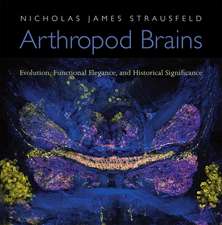Protein Aggregation and Fibrillogenesis in Cerebral and Systemic Amyloid Disease: Subcellular Biochemistry, cartea 65
Editat de J. Robin Harrisen Limba Engleză Hardback – 6 dec 2012
| Toate formatele și edițiile | Preț | Express |
|---|---|---|
| Paperback (1) | 1430.00 lei 6-8 săpt. | |
| SPRINGER NETHERLANDS – 29 ian 2015 | 1430.00 lei 6-8 săpt. | |
| Hardback (1) | 1449.55 lei 6-8 săpt. | |
| SPRINGER NETHERLANDS – 6 dec 2012 | 1449.55 lei 6-8 săpt. |
Din seria Subcellular Biochemistry
- 18%
 Preț: 948.79 lei
Preț: 948.79 lei - 5%
 Preț: 1456.88 lei
Preț: 1456.88 lei - 18%
 Preț: 1373.84 lei
Preț: 1373.84 lei - 18%
 Preț: 1243.78 lei
Preț: 1243.78 lei - 18%
 Preț: 2098.81 lei
Preț: 2098.81 lei - 18%
 Preț: 1122.10 lei
Preț: 1122.10 lei - 5%
 Preț: 1160.63 lei
Preț: 1160.63 lei - 18%
 Preț: 1396.26 lei
Preț: 1396.26 lei - 18%
 Preț: 1114.96 lei
Preț: 1114.96 lei - 18%
 Preț: 1224.68 lei
Preț: 1224.68 lei - 18%
 Preț: 951.29 lei
Preț: 951.29 lei - 18%
 Preț: 1227.99 lei
Preț: 1227.99 lei -
 Preț: 398.15 lei
Preț: 398.15 lei -
 Preț: 399.88 lei
Preț: 399.88 lei - 18%
 Preț: 1231.47 lei
Preț: 1231.47 lei - 18%
 Preț: 1230.35 lei
Preț: 1230.35 lei -
 Preț: 392.60 lei
Preț: 392.60 lei - 18%
 Preț: 1231.47 lei
Preț: 1231.47 lei - 15%
 Preț: 638.76 lei
Preț: 638.76 lei - 5%
 Preț: 656.26 lei
Preț: 656.26 lei -
 Preț: 389.49 lei
Preț: 389.49 lei - 5%
 Preț: 659.19 lei
Preț: 659.19 lei -
 Preț: 392.37 lei
Preț: 392.37 lei - 5%
 Preț: 662.09 lei
Preț: 662.09 lei -
 Preț: 395.09 lei
Preț: 395.09 lei - 5%
 Preț: 667.99 lei
Preț: 667.99 lei -
 Preț: 400.47 lei
Preț: 400.47 lei - 18%
 Preț: 1224.54 lei
Preț: 1224.54 lei - 15%
 Preț: 647.73 lei
Preț: 647.73 lei - 15%
 Preț: 646.75 lei
Preț: 646.75 lei - 5%
 Preț: 662.30 lei
Preț: 662.30 lei -
 Preț: 395.25 lei
Preț: 395.25 lei - 18%
 Preț: 1230.21 lei
Preț: 1230.21 lei - 18%
 Preț: 1231.95 lei
Preț: 1231.95 lei - 18%
 Preț: 964.54 lei
Preț: 964.54 lei
Preț: 1449.55 lei
Preț vechi: 1525.84 lei
-5% Nou
Puncte Express: 2174
Preț estimativ în valută:
277.38€ • 296.61$ • 231.27£
277.38€ • 296.61$ • 231.27£
Carte tipărită la comandă
Livrare economică 17 aprilie-01 mai
Preluare comenzi: 021 569.72.76
Specificații
ISBN-13: 9789400754157
ISBN-10: 9400754159
Pagini: 668
Ilustrații: XVIII, 650 p.
Dimensiuni: 155 x 235 x 41 mm
Greutate: 1.41 kg
Ediția:2012
Editura: SPRINGER NETHERLANDS
Colecția Springer
Seria Subcellular Biochemistry
Locul publicării:Dordrecht, Netherlands
ISBN-10: 9400754159
Pagini: 668
Ilustrații: XVIII, 650 p.
Dimensiuni: 155 x 235 x 41 mm
Greutate: 1.41 kg
Ediția:2012
Editura: SPRINGER NETHERLANDS
Colecția Springer
Seria Subcellular Biochemistry
Locul publicării:Dordrecht, Netherlands
Public țintă
ResearchCuprins
1. Introduction and Technical Survey. - 2. Fibril Formation by Short Synthetic Peptides. - 3. In vitro Oligomerization and Fibrillogenesis of Amyloid-beta Peptides. - 4. Tau Fibrillogenesis. - 5. Prion protein Aggregation and Fibrillogenesis In vitro. - 6. α-Synuclein Aggregation and Modulating Factors. - 7. Pathological Self-aggregation of β2-microglobulin: A Challenge for Protein Biophysics. - 8. Islet amyloid polypeptide – Aggregation and fibrillogenesis in vitro and its Inhibition. - 9. Mechanisms of Transthyretin Aggregation and Toxicity. - 10. Fibrillogenesis of Huntingtin and Other Glutamine Containing Proteins. - 11. Aggregation and Fibrillogenesis of Proteins not Associated with Disease – A few Case Studies. - 12. Experimental Inhibition of Peptide Fibrillogenesis by Synthetic Peptides, Carbohydrates and Drugs. - 13. Experimental inhibition of fibrillogenesis and neurotoxicity by amyloid-beta (Aβ) and other disease-related peptides/proteins by plant extracts and herbal compounds. - 14. Alzheimer’s Disease. - 15. Modeling the Polyglutamine Aggregation Pathway in Huntington’s Disease: from Basic Studies to Clinical Applications. - 16. Parkinson’s Disease. - 17. Human Prion Diseases: From Kuru to Variant Creutzfeldt-Jakob Diseasae. - 18. Animal Prion Diseases. - 19. β2-microglobulin Amyloidosis. - 20. Systemic AA Amyloidosis. - 21. Familial Amyloidotic Polyneuropathy and Transthyretin. - 22. The Challenge of Systemic Immunoglobulin Light-chain Amyloidosis (AL).
Textul de pe ultima copertă
This volume of the Subcellular Biochemistry series is devoted to the aggregation and fibrillogenesis of the amyloid-forming peptides and proteins, including emphasis on oligomer formation as well as fibril formation. The diverse topics included here are presented within 22 chapters, covering many of the relevant topics from both a basic science and clinical perspective. The authorship of these chapters is thoroughly international, with authoritative contributions from active researchers. Fundamental structural and cellular studies using many different technical approaches are presented, leading through to clinical and therapeutic aspects of the amyloid diseases, considered from both pharmaceutical and natural product view points. It is hoped that this book will be of use to both biomedical scientists and clinicians wishing to keep abreast of this rapidly advancing field, of direct importance to the understanding of cerebral neurodegenerative disease and systemic amyloid disease.
Caracteristici
This book is unique in that it contains both Basic Science and Clinical consideration of the amyloid diseases Up-to-date knowledge is presented by authoritative researchers and clinicians The broad range of techniques used to study amyloidogenesis is clear from the topics included in the book Some emphasis appears relating the cytotoxicity of protein oligomers as well as fibrils in the genesis of amyloid disease Includes supplementary material: sn.pub/extras Includes supplementary material: sn.pub/extras













